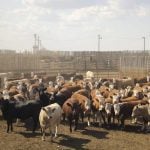Five or six years ago few people had heard of biostimulants, which were only being used in some high-value, horticultural crops. Today, the biostimulant market is one of the fastest growing, global agri-input sectors, increasing by 12 to 15 per cent annually. “Biostimulants is a rapidly growing field right now in agriculture, largely because these […] Read more












